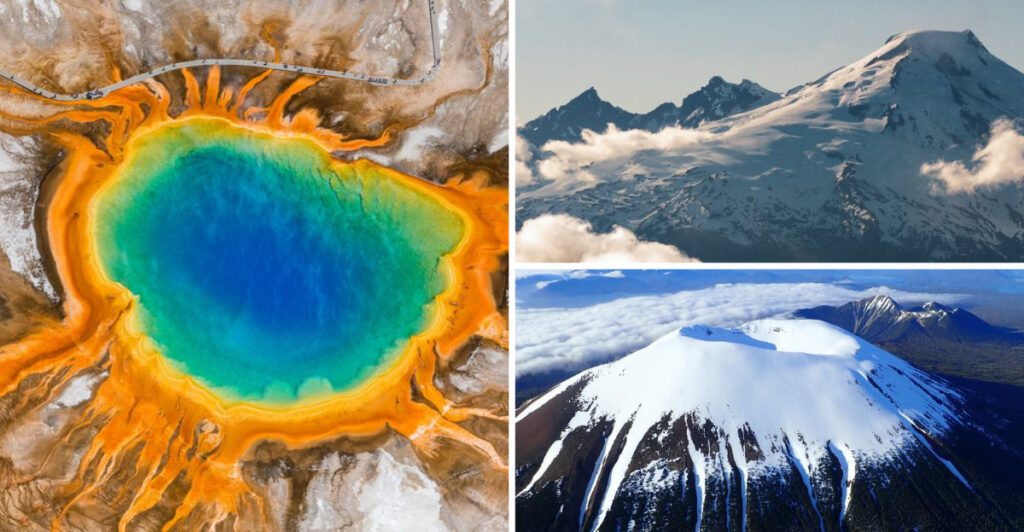The United States, with its diverse landscape, is home to many volcanoes that often go unnoticed. These geological wonders hold fascinating secrets, waiting to be discovered. From the rugged terrains of the Pacific Northwest to the serene settings of the Southwest, each volcano tells a unique story. Let’s explore 17 massive U.S. volcanoes that are rarely talked about but are definitely worth knowing.
1. Mount Edgecumbe
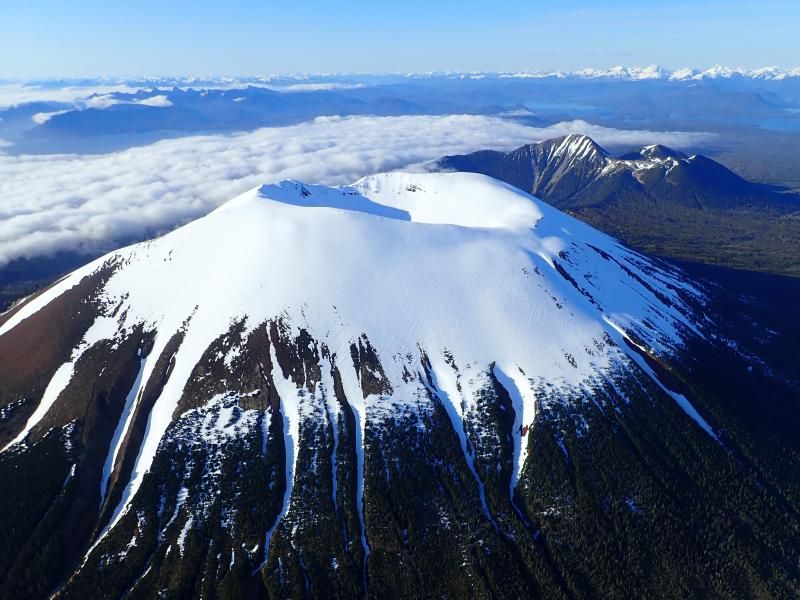
Mount Edgecumbe, located in southeastern Alaska, boasts a striking silhouette against the horizon. Its last eruption occurred more than 4000 years ago, yet it remains a significant geological feature in the region. The volcano’s peaceful demeanor belies its potentially explosive nature. Early explorers mistook its smoke for Native signal fires, highlighting its historical significance.
Despite its dormancy, Mount Edgecumbe captivates scientists with its unique geological formations. Visitors to nearby Sitka often marvel at its presence, wondering about the secrets it might hold. The volcano’s remote location adds to its allure, making it a subject of intrigue for both scientists and adventurers alike.
2. Mount Hood
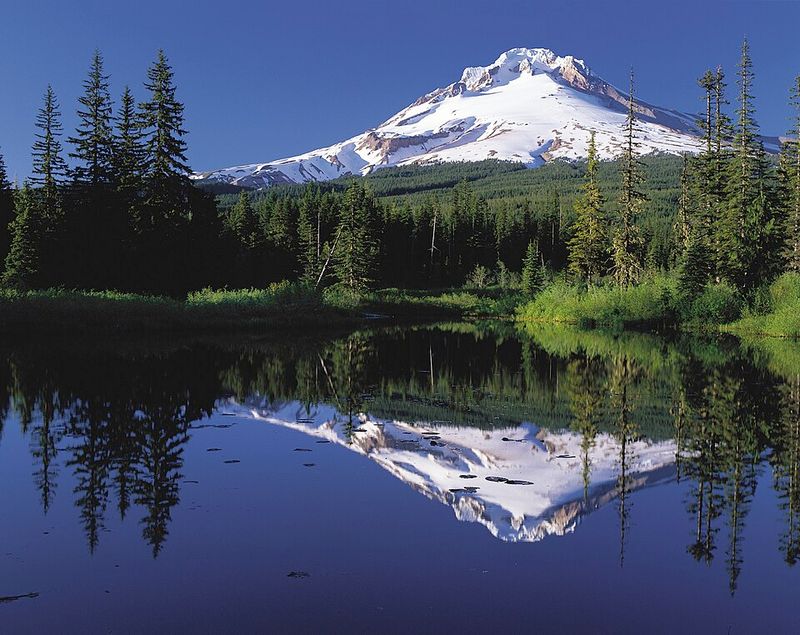
Majestic Mount Hood, Oregon’s highest peak, is not just a skier’s paradise but also a dormant volcanic giant. With its last major eruption occurring in the 1790s, the volcano remains a subject of study for geologists. Its snow-capped summit serves as a picturesque backdrop for Portland, often shrouded in mist and mystery.
The Native American legends speak of Mount Hood as a place of spiritual significance, adding to its enigmatic charm. Scientists continue to monitor its geothermal activity, ever watchful for signs of awakening. The mountain’s blend of natural beauty and latent power makes it a fascinating subject for both locals and visitors.
3. Mount Baker
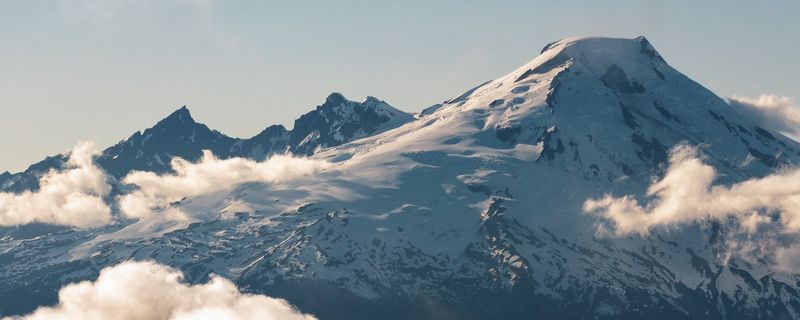
Mount Baker, situated in the North Cascades of Washington, is a striking example of nature’s artistry. Known for its heavy snowfall, it holds the record for the most snowfall in a single season. Its youthful vibrancy is contrasted by its dormant volcanic nature, with the last eruption occurring in the 19th century.
The volcano’s name pays homage to the British explorer Joseph Baker, who first sighted it in the 1790s. Today, it serves as a popular climbing destination, attracting adventurers eager to conquer its icy peaks. The juxtaposition of its serene glacial fields with the underlying volcanic activity creates a dynamic natural spectacle.
4. Lassen Peak
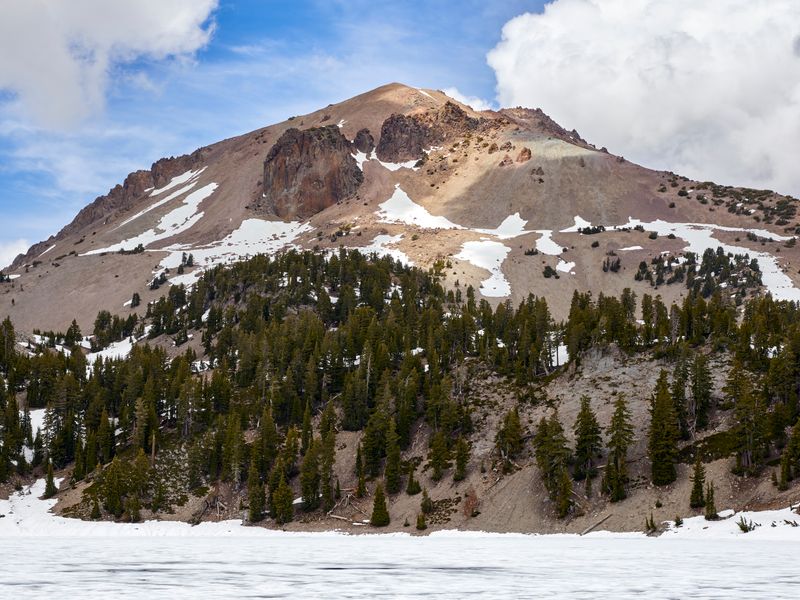
Lassen Peak, nestled in Northern California, is a captivating testament to nature’s unpredictable might. As the southernmost active volcano in the Cascade Range, its eruption in 1914 serves as a vivid reminder of its potential. The surrounding Lassen Volcanic National Park offers a glimpse into a surreal landscape shaped by past volcanic activity.
Visitors are often enchanted by the park’s hydrothermal features, including bubbling mud pots and steaming fumaroles, which hint at the restless earth beneath. Lassen Peak’s rugged beauty and volatile history make it a geological gem, inviting both curiosity and respect from those who venture near.
5. Mount Shasta

Mount Shasta, towering in Northern California, is a majestic presence in the Cascade Range. Known for its ethereal beauty, it has inspired countless myths and legends among Native American tribes. Its last eruption in the late 18th century left a lasting mark on the landscape, with remnants still visible today.
The mountain’s spiritual significance is palpable, drawing visitors seeking both adventure and solace. Mount Shasta’s prominence and symmetry make it a beloved subject for photographers and artists alike. Its enduring mystique and geological importance ensure its place as a noteworthy, if lesser-known, American volcano.
6. Crater Lake
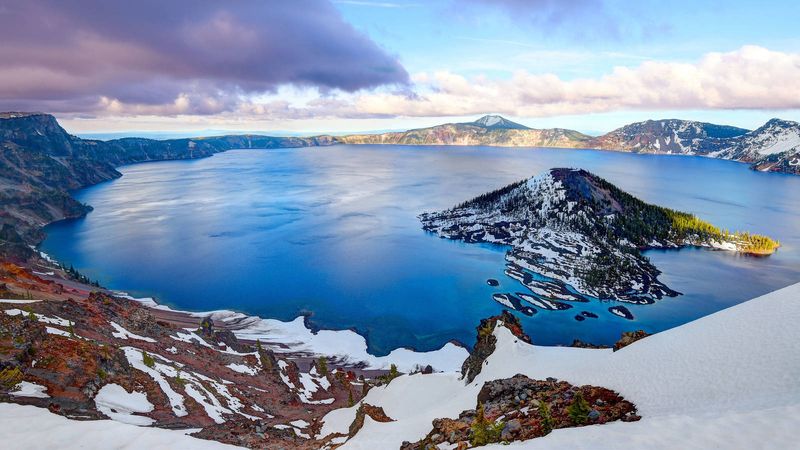
Crater Lake, formed by the collapse of Mount Mazama, offers a unique glimpse into volcanic history. Its deep blue waters and sheer caldera walls tell a story of cataclysmic eruption and transformation. Though now serene, the lake is a vivid reminder of the volcanic forces that shaped it.
The legend of Crater Lake speaks of a battle between the gods, adding a layer of mystique to its already mesmerizing beauty. Scientists study its depths to understand the volcanic processes that led to its formation. Crater Lake’s tranquility belies its violent origins, making it a place of both wonder and contemplation.
7. Mount Rainier
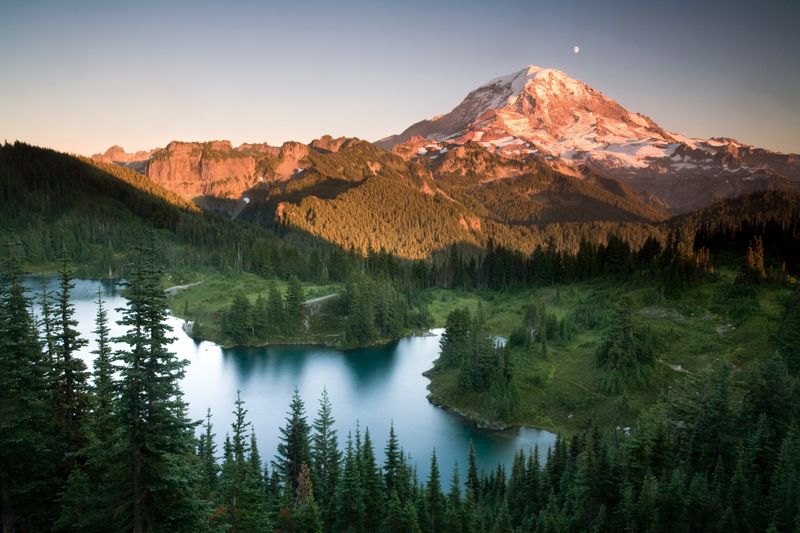
Mount Rainier, the towering sentinel of Washington State, is more than just a stunning peak. Its massive glaciers and active geothermal features make it a subject of scientific fascination. While its last eruption occurred in the 19th century, the volcano remains a potential threat to nearby communities.
The mountain’s imposing presence has inspired both awe and respect, with its glacial flows serving as a stark reminder of its power. Embraced by lush meadows and diverse ecosystems, Mount Rainier is a testament to nature’s grandeur and volatility. Its iconic silhouette dominates the landscape, capturing the imagination of all who behold it.
8. Yellowstone Caldera
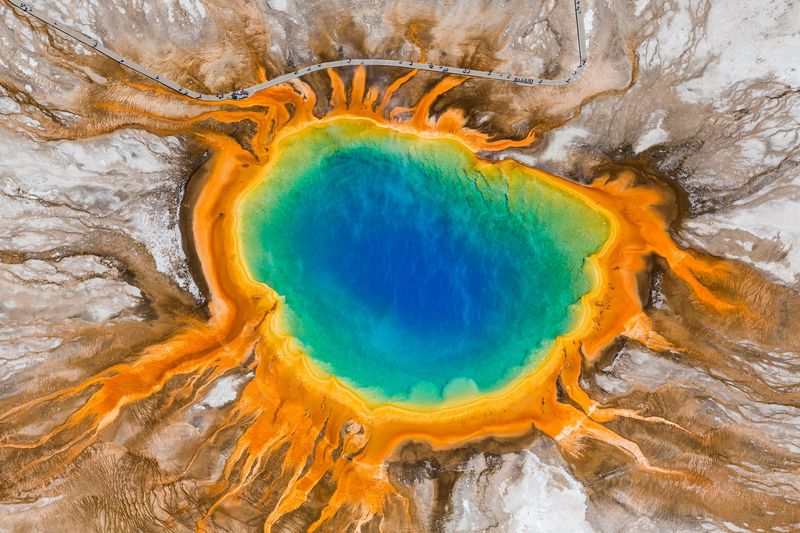
The Yellowstone Caldera, nestled in the heart of America’s first national park, is a volcanic marvel unlike any other. Its supervolcanic history is marked by some of the most powerful eruptions known to mankind. Geysers, hot springs, and fumaroles dot the landscape, offering a glimpse into the powerful forces at play beneath the surface.
The caldera’s geothermal features attract millions of visitors each year, drawn to the stunning beauty and scientific intrigue. Yellowstone’s restless earth is constantly monitored by scientists, ever vigilant for signs of future activity. The caldera’s vast expanse and dynamic geology make it a cornerstone of volcanic study.
9. Mount St. Helens

Mount St. Helens, forever etched in history by its catastrophic 1980 eruption, stands as a powerful reminder of nature’s fury. The eruption reshaped the landscape, creating a vast crater and decimating surrounding forests. Though quieter now, the volcano remains active, with frequent seismic activity and minor eruptions.
The event is a focal point for geological study, offering insights into volcanic behavior and ecosystem recovery. Visitors to the area can witness the remarkable regrowth and resilience of nature firsthand. Mount St. Helens’ dramatic past and ongoing activity make it a pivotal site for both research and reflection.
10. Mauna Loa
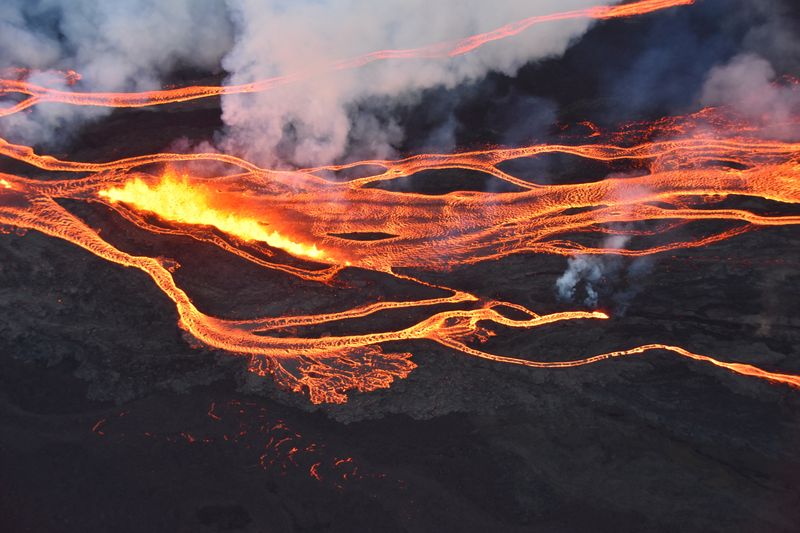
Mauna Loa, the world’s largest active volcano, is a colossal presence on the Big Island of Hawaii. Its frequent eruptions have shaped the island’s landscape, creating vast lava fields and new land. The volcano’s gentle slopes belie the power and unpredictability of its eruptions.
Mauna Loa’s importance extends beyond its size, as it plays a crucial role in Hawaiian culture and tradition. Scientists closely monitor its activity, using it as a keystone for understanding volcanic processes. The combination of cultural significance and geological wonder makes Mauna Loa a truly remarkable natural feature.
11. Kilauea
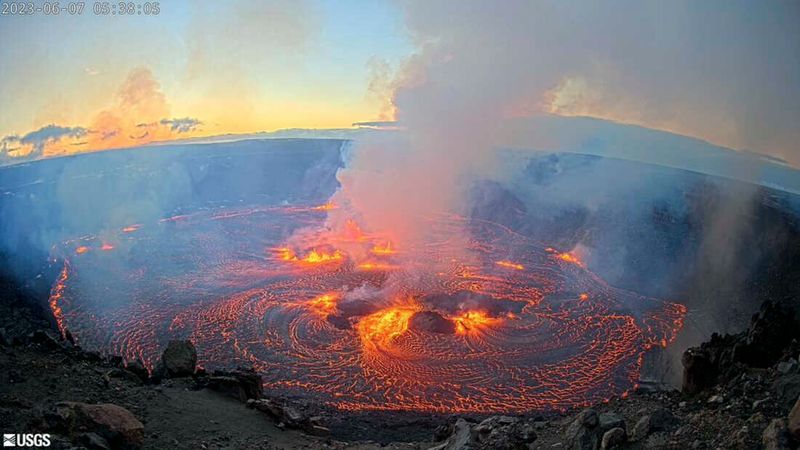
Kilauea, one of the most active volcanoes on Earth, is a fiery spectacle on Hawaii’s Big Island. Its continuous eruptions create a dynamic and ever-changing landscape, captivating scientists and tourists alike. The volcano’s lava flows have been both destructive and creative, reshaping the island’s geography.
Kilauea holds significant cultural importance, regarded as the home of Pele, the Hawaiian goddess of fire. The volcano’s ceaseless activity offers a unique opportunity to study volcanic processes in real-time. Kilauea’s blend of cultural mythology and scientific interest makes it a captivating centerpiece of volcanic exploration.
12. Mount Adams
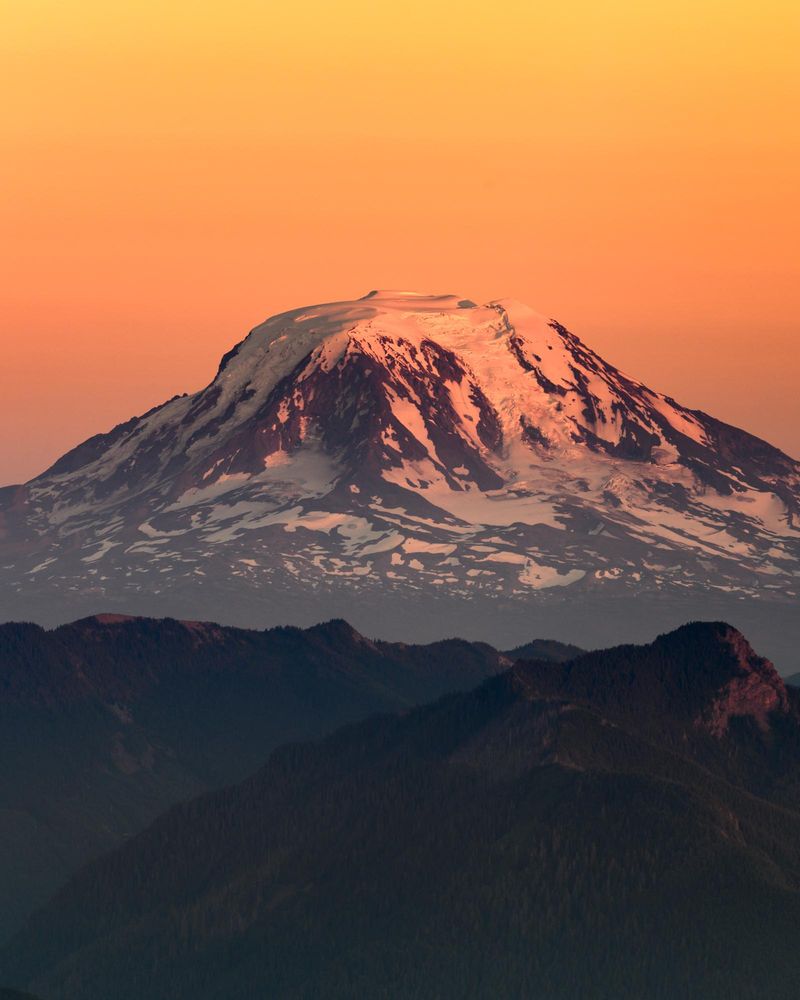
Mount Adams, the second highest peak in Washington, is a dormant giant that commands attention with its towering presence. Though its last eruption occurred thousands of years ago, the volcano’s potential for future activity is a subject of ongoing study. Its glaciated slopes are a haven for outdoor enthusiasts, offering stunning vistas and challenging climbs.
The Yakama Nation holds Mount Adams as a sacred site, imbuing it with cultural and spiritual significance. This connection to the land adds a rich layer of history to the volcano’s geological intrigue. Mount Adams’ majestic beauty and cultural resonance make it a cherished landmark.
13. Newberry Volcano
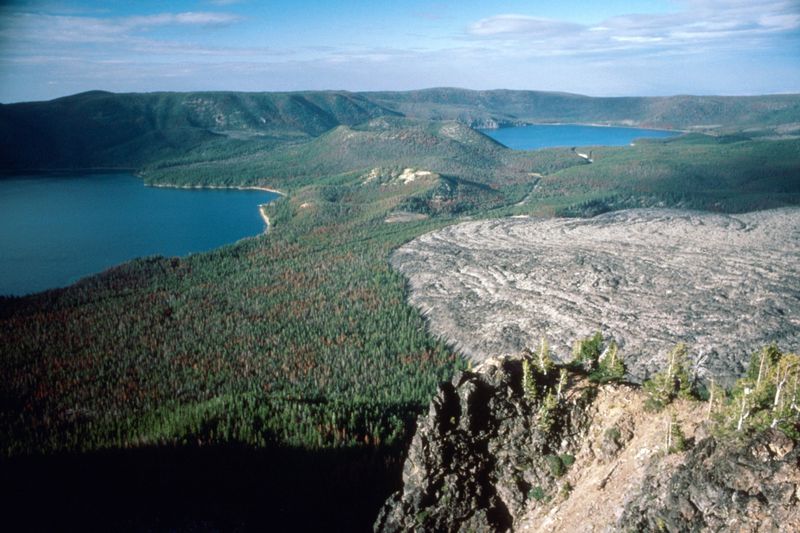
Newberry Volcano, located in central Oregon, is a shield volcano with a fascinating array of geothermal features. Its expansive caldera is home to two stunning lakes, Paulina and East, formed by ancient eruptions. The volcano’s lava flows and cinder cones create a varied and captivating landscape.
Scientists study Newberry Volcano’s past activity to better understand its potential future behavior. The area is also a popular recreational destination, drawing visitors with its hot springs and scenic beauty. Newberry Volcano’s blend of natural wonder and scientific interest makes it a noteworthy geological site.
14. Mount Spurr
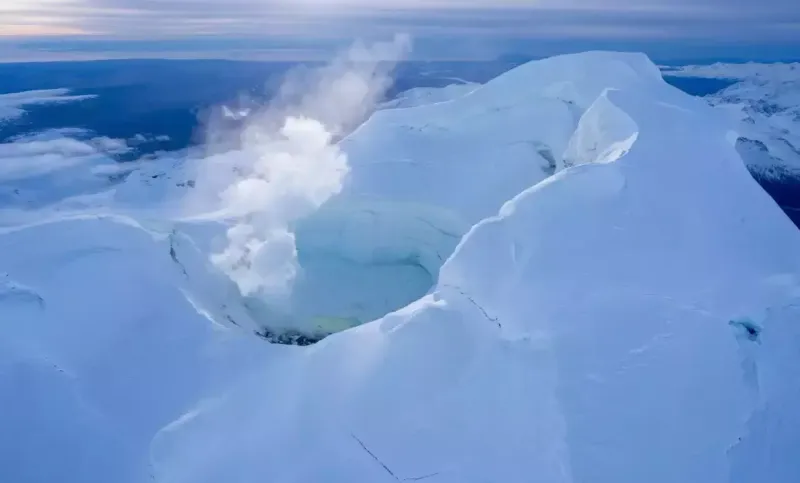
Mount Spurr, an active stratovolcano in Alaska, is known for its explosive history and dramatic landscape. Its most recent eruption in 1992 sent ash plumes thousands of feet into the air, impacting air travel and nearby communities. The volcano’s proximity to Anchorage makes its activity particularly significant.
Despite its potential danger, Mount Spurr attracts scientists and adventurers eager to explore its rugged terrain. The insights gained from studying its eruptions contribute to our understanding of volcanic behavior. Mount Spurr’s formidable presence and scientific value make it a key player in the study of Alaskan volcanoes.
15. Mount Redoubt
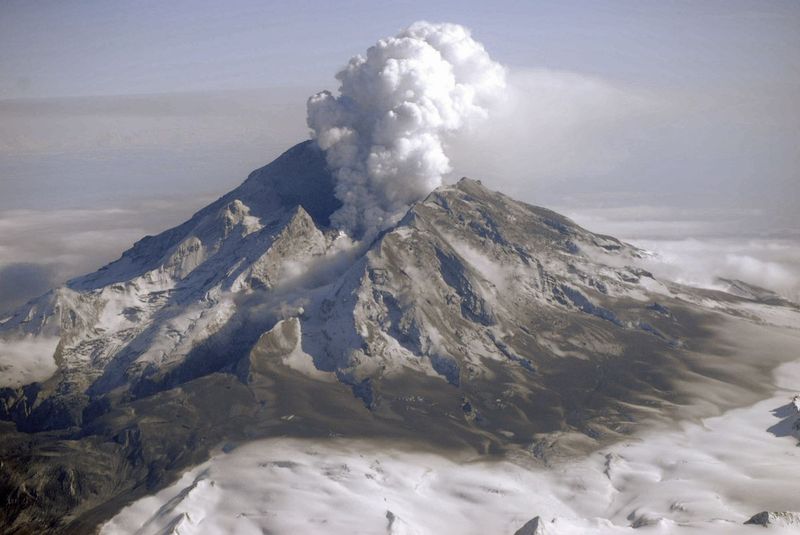
Mount Redoubt, one of Alaska’s most active volcanoes, is known for its dramatic eruptions and imposing stature. The 1989-90 eruption disrupted air traffic and served as a wake-up call for volcanic monitoring. Its eruptions are characterized by explosive ash plumes and pyroclastic flows.
The volcano’s remote location adds to the challenge of studying its behavior, yet scientists remain vigilant. Mount Redoubt’s volatile activity and majestic beauty make it a vital subject for understanding volcanic hazards. The ongoing observation and study of this dynamic volcano provide valuable insights into the forces shaping our planet.
16. Mount Katmai
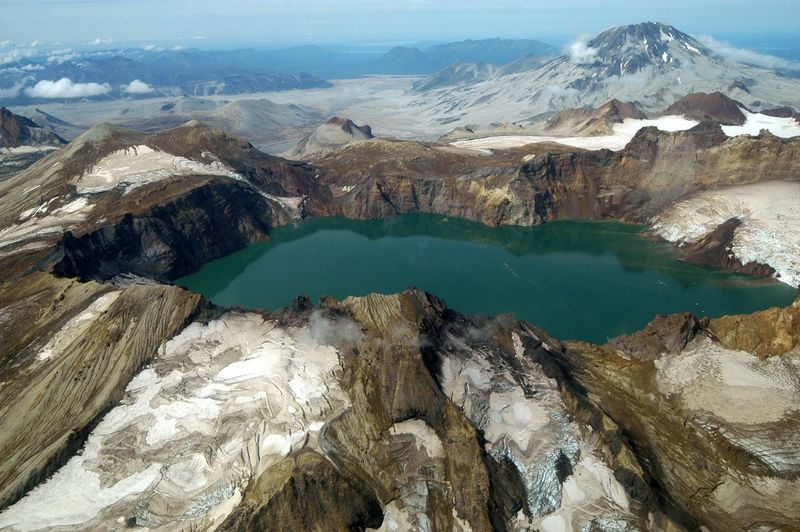
Mount Katmai, best known for the 1912 eruption that formed the Valley of Ten Thousand Smokes, is a geological wonder. The eruption, one of the largest in the 20th century, blanketed the area in ash and created a surreal landscape. Today, the volcano’s caldera and surrounding features are part of Katmai National Park.
Visitors are drawn to the park’s unique beauty, exploring the remnants of volcanic activity and abundant wildlife. Mount Katmai’s historical significance and natural splendor make it a captivating destination for both scientists and nature lovers. The volcano’s past eruptions have left an indelible mark on the landscape, telling a powerful story of nature’s might.
17. Mount Cleveland
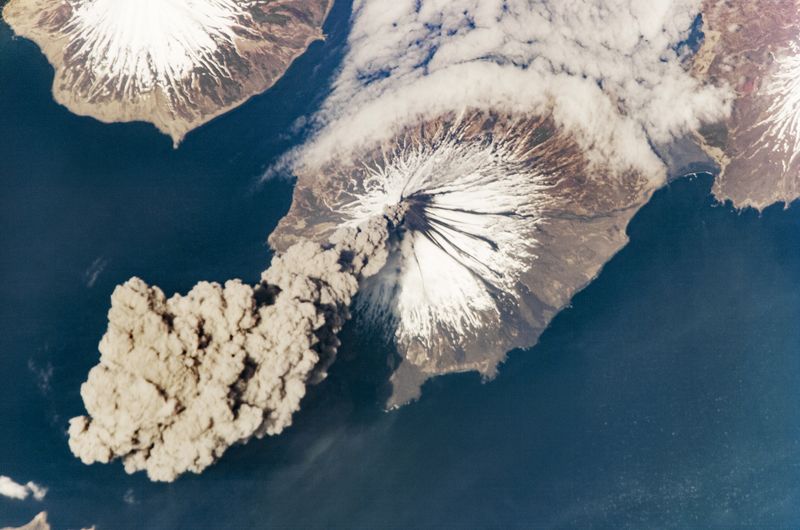
Mount Cleveland, part of the Aleutian Islands in Alaska, is renowned for its frequent and unpredictable eruptions. The volcano’s remote location and active status make it a focal point for volcanic research. Its eruptions often produce ash clouds that pose a threat to air traffic across the region.
Despite the challenges in accessibility, Mount Cleveland remains a key site for understanding volcanic activity in the Aleutian arc. The stark beauty of its rugged terrain and the power of its eruptions capture the imagination. Mount Cleveland’s ongoing activity provides a dynamic and captivating subject for scientific exploration.

